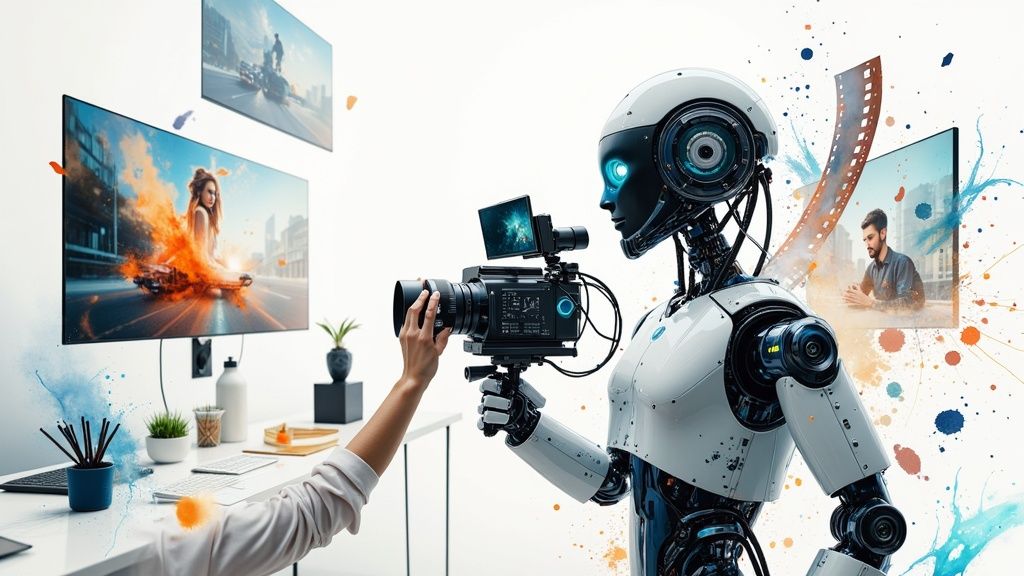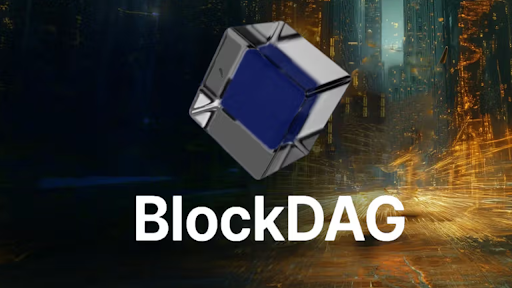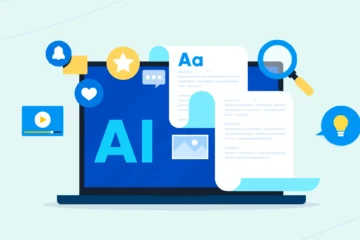In the past, video production was a time-consuming and resource-heavy process that required access to expensive equipment, large editing teams, and long turnaround times. Today, artificial intelligence (AI) is revolutionizing this landscape, giving creators access to faster, smarter, and more cost-effective tools. Whether you’re a solo content creator, a brand marketer, or a video production agency, AI is becoming an indispensable ally in transforming ideas into polished visual content.
Let’s explore how AI is changing the future of video production, what tools are now available, and why it’s essential for creators to understand the potential—and the limitations—of this technology.
Automation is Changing the Editing Game
AI’s most visible contribution to video production lies in editing automation. Traditional editing required manual sequencing, transitions, audio balancing, and visual effects. Now, AI tools can analyze raw footage, detect scenes, and automatically edit clips into coherent, polished videos.
For creators, this means no more spending hours combing through footage. Many AI-based editors can:
- Automatically trim silences or dead footage
- Suggest optimal cuts based on speech or motion
- Add royalty-free background music and match the tempo with transitions
- Suggest titles, overlays, and call-to-actions based on content type
These features dramatically reduce production time and open doors for creators to focus more on storytelling and less on technical execution.
Enhancing Storytelling with Data-Driven Insights
One of the most exciting applications of AI in video creation is its ability to provide insights that improve narrative flow and viewer engagement. AI can analyze viewer behavior—what parts of a video get rewatched, where audiences drop off, and which visuals keep attention the longest.
Armed with these insights, creators can adapt their content strategy to meet viewer expectations. For instance, if data shows that intros longer than 10 seconds result in lower watch times, a creator can restructure future videos for better performance.
Additionally, AI-powered scripts can suggest narrative structures or even help generate dialogue for explainer or promotional content. This is particularly useful for brands and educators who need to maintain consistency across large volumes of content.
Scaling Production Without Scaling Teams
For creators and marketers alike, scaling video production is often constrained by time, budget, or manpower. AI breaks through these barriers. By automating key parts of the workflow, creators can produce more videos in less time—without sacrificing quality.
Some AI platforms allow users to generate entire video variations with minimal manual effort. For example, a single product demo video can be transformed into multiple versions tailored for Instagram, YouTube Shorts, LinkedIn, and TikTok. With AI adapting aspect ratios, copy placement, and durations for each platform, creators can instantly scale their content strategy without increasing their workload.
Another growing trend is the use of ai generated avatar video content, which enables creators to generate human-like presenters without needing to be on camera themselves. These avatars can deliver scripted content with realistic voiceovers and facial expressions—ideal for corporate training, product demos, or even influencer-style narratives.
Accessibility and Inclusion Through Smart Features
AI is not just making video creation easier—it’s making it more inclusive. Tools that automatically generate captions, translate languages, or adapt content for visually impaired users are now becoming standard features in modern video editing apps.
Automatic subtitle generation, for example, ensures that videos are accessible to viewers with hearing impairments or those watching in silent mode. Real-time translation makes it possible to reach global audiences without needing professional linguists.
Creators no longer need to invest in costly post-production services to meet accessibility requirements; AI delivers these features with speed and affordability, expanding their content’s reach and impact.
Democratizing Video Creation for All Skill Levels
Perhaps the most transformative power of AI in video production is how it levels the playing field. You no longer need years of editing experience or high-end gear to produce studio-quality content. Beginner creators, solo entrepreneurs, and educators can all benefit from intuitive platforms that simplify complex processes.
This is where tools like ai video generator app solutions come into play. They offer a fast and easy way to produce videos using templates, voiceovers, and intelligent editing features. Many of these platforms are browser-based and require no software installation, making them perfect for creators who need to work on the go.
One notable example is invideo AI, which offers a free ai video generator app designed for creators at all levels. It allows users to turn text prompts into structured videos, complete with music, transitions, and voiceovers—all with just a few clicks. This streamlining allows creators to experiment with new ideas quickly, test different formats, and keep up with fast-paced digital trends.
Staying Ahead of the Curve: The Creator’s Mindset
With AI reshaping the video production space, creators need more than just access to tools—they need the right mindset. Rather than seeing AI as a replacement for human creativity, it should be embraced as a powerful assistant. AI can handle the technical, repetitive, and time-intensive tasks, freeing creators to invest their energy in storytelling, branding, and audience engagement.
However, staying ahead means keeping up with evolving tools, understanding their ethical implications, and using them responsibly. For example, transparency about the use of AI avatars or synthetic voices is crucial when building trust with audiences.
Moreover, while AI can do a lot, it can’t replace the authentic human connection that content creators provide. A personal voice, genuine emotion, and cultural context still matter—and these are areas where human creators will always have an edge.
Final Thoughts
The rise of AI in video production is more than a trend—it’s a paradigm shift. By automating labor-intensive tasks, enhancing storytelling, and democratizing access to high-quality tools, AI is empowering a new generation of content creators. For those willing to embrace the technology with creativity and responsibility, the opportunities are endless.
Keep an eye for more latest news & updates on Tribune!



